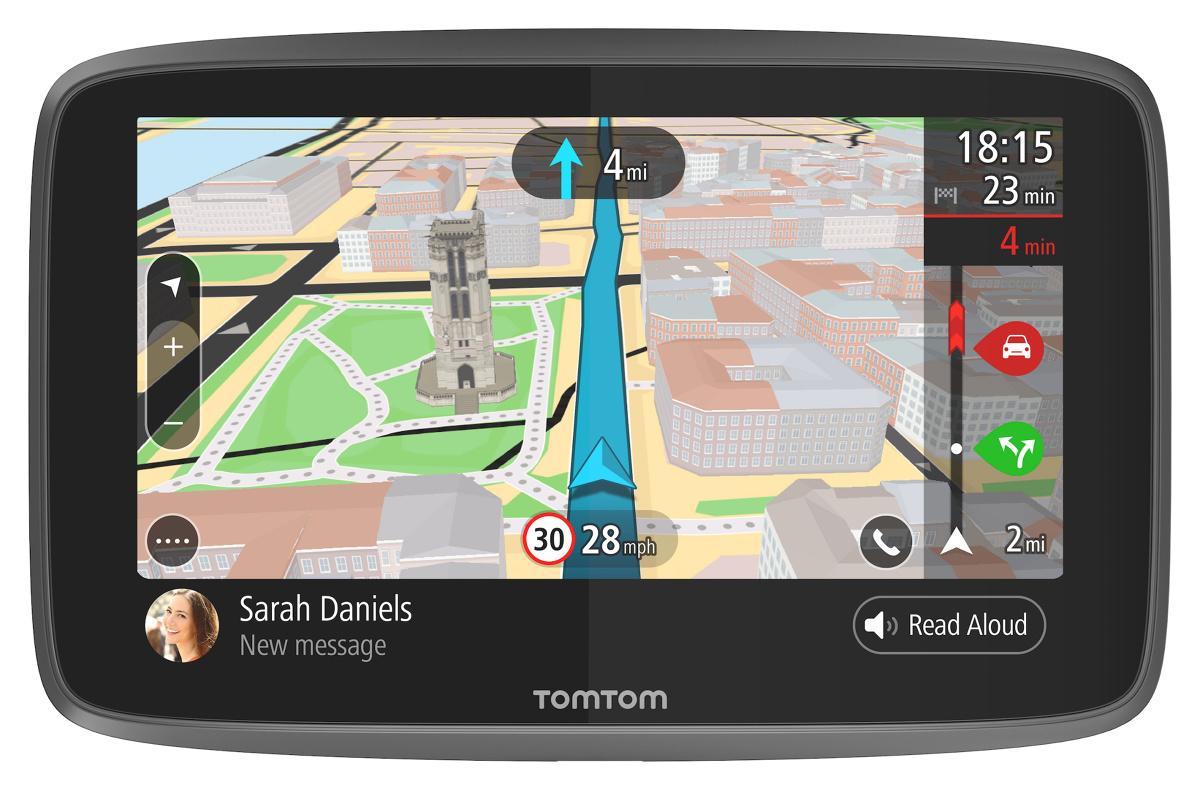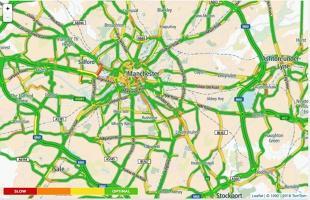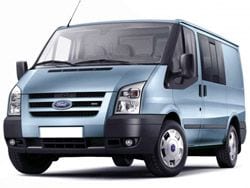
7 things you should know about navigation and its future
 New technologies have allowed us to forget about the classic paper maps many years ago. Today, in every driver's toolbox, instead of an atlas, there is navigation - portable, in the form of a mobile application or a factory device installed by the car manufacturer. Continuous development means that there are many questions related to navigating to a destination. We asked TomTom, one of the world's largest manufacturers of navigators and the creators of the maps used in them, to answer them.
New technologies have allowed us to forget about the classic paper maps many years ago. Today, in every driver's toolbox, instead of an atlas, there is navigation - portable, in the form of a mobile application or a factory device installed by the car manufacturer. Continuous development means that there are many questions related to navigating to a destination. We asked TomTom, one of the world's largest manufacturers of navigators and the creators of the maps used in them, to answer them.
The history of car navigation dates back to the late 70s. In 1978 Blaupunkt filed a patent for a targeting device. However, the real development of navigation occurred in the 90s, when, after the fall of the Berlin Wall and the end of the Cold War, civilians gained access to military GPS satellite technology. The first navigators were equipped with low-quality maps that did not accurately reflect the grid of streets and addresses. In many cases, they had only the main arteries and led to a certain place with a high degree of approximation.
One of the pioneers of maps and navigation, along with brands such as Garmin and Becker, was the Dutch company TomTom, which in 2016 celebrated its 7th anniversary on the market. The brand has been investing in Poland for many years and, thanks to the skills of Polish programmers and cartographers, develops its products aimed not only at the market of Central and Eastern Europe, but also around the world. We had the opportunity to speak with the most important representatives of TomTom: Harold Goddein - CEO and co-founder of the company, Alain De Taile - member of the board and Krzysztof Miksa, responsible for solutions created for autonomous vehicles. Here are XNUMX things you should know about car navigation and its future development.
What has changed in 25 years in cartographic technologies?
 The maps that are coming out today should be - and are - much more accurate, as well as more complete. The point is not only to lead the user to a specific address, but also to present him with the target building, for example, using a photograph of its facade or a 3D model. In the past, standard methods were used to create maps - measurements taken by handheld devices were transferred to paper and then converted into digital data. Currently, special vehicles are used for this, equipped with radars, lidars and sensors - (for example, installed on brake discs) that scan the streets and their surroundings and store them in digital form.
The maps that are coming out today should be - and are - much more accurate, as well as more complete. The point is not only to lead the user to a specific address, but also to present him with the target building, for example, using a photograph of its facade or a 3D model. In the past, standard methods were used to create maps - measurements taken by handheld devices were transferred to paper and then converted into digital data. Currently, special vehicles are used for this, equipped with radars, lidars and sensors - (for example, installed on brake discs) that scan the streets and their surroundings and store them in digital form.
How late are maps updated?
“Due to the development of online navigation applications, young navigation users expect the maps they use to be as up-to-date as possible, with traffic news and changes coming on a regular basis. If earlier, for example, the map was updated every three months, today motorists want to know about the reconstruction of the roundabout or the closure of the route on the same or no later than the next day, and navigation should guide them, avoiding closed streets,” notes Alain De Thay in Motofaktami interview.
With most brands of mobile navigation apps providing traffic changes to manufacturers on an ongoing basis, they are able to create map updates very frequently and send them to their users in the form of packages that improve the navigation experience. In the case of PND (Personal Navigation Device) - the very famous "GPS" mounted on car windows, manufacturers have moved away from updating once every three months and send out parcels with new data much more often. How often it will check for new cards depends on the driver. The situation is different in the case of devices with a built-in SIM card or with the ability to connect via Bluetooth to a mobile phone through which they will access the Internet. Here, updates are likely to occur as often as in the case of navigation applications.
The future of navigation - for smartphones and applications or classic navigation with online functions?
 “Smartphones are definitely the future of car navigation. Of course, there will still be people who will want to use the classic PND navigation because of their habit or the argument that they need a phone while traveling for other purposes. Navigation devices are also much more convenient to travel than a smartphone, but the global trend is towards the universal use of smartphones at all levels of our lives,” comments Alain De Tay. Always-on Internet access and enhanced operating capabilities of smartphones are the main reasons why they are the future of navigation.
“Smartphones are definitely the future of car navigation. Of course, there will still be people who will want to use the classic PND navigation because of their habit or the argument that they need a phone while traveling for other purposes. Navigation devices are also much more convenient to travel than a smartphone, but the global trend is towards the universal use of smartphones at all levels of our lives,” comments Alain De Tay. Always-on Internet access and enhanced operating capabilities of smartphones are the main reasons why they are the future of navigation.
What is "traffic" and how is traffic data collected?
Often referred to in the case of in-car navigation with online features, traffic data is nothing more than information about how busy the streets are at the moment. “Traffic data for TomTom devices and apps comes from information provided by users of our products. We have a database of approximately 400 million devices that allow us to accurately predict delays and locate traffic jams on maps,” says Alain De Taile. Navigation devices can calculate traffic delays on your route and suggest alternative, faster routes.
Why is the information about traffic jams/interruptions incorrect?
 Traffic analysis is based on recording the travel times of other users who have previously followed a given route. Not all information is up to date and not all information is accurate. This is due to the technology that is used to inform users about the traffic and the frequency of trips on given routes using the chosen solution. If you encounter a traffic jam at a given location despite your navigation claiming that the road is passable, it may mean that in the last ten or so minutes (when there was a traffic jam) no user submitting the data has passed Here. In many cases, traffic figures are also historical information - an analysis of a given episode over the past few days or weeks. Algorithms allow you to notice certain patterns in transitions, for example, Marszalkowska Street in Warsaw is known to be jammed with traffic during peak hours, so navigators try to avoid it. However, sometimes it happens that at the moment it is passable. These are the main reasons why obstacle and traffic warnings are inaccurate.
Traffic analysis is based on recording the travel times of other users who have previously followed a given route. Not all information is up to date and not all information is accurate. This is due to the technology that is used to inform users about the traffic and the frequency of trips on given routes using the chosen solution. If you encounter a traffic jam at a given location despite your navigation claiming that the road is passable, it may mean that in the last ten or so minutes (when there was a traffic jam) no user submitting the data has passed Here. In many cases, traffic figures are also historical information - an analysis of a given episode over the past few days or weeks. Algorithms allow you to notice certain patterns in transitions, for example, Marszalkowska Street in Warsaw is known to be jammed with traffic during peak hours, so navigators try to avoid it. However, sometimes it happens that at the moment it is passable. These are the main reasons why obstacle and traffic warnings are inaccurate.

